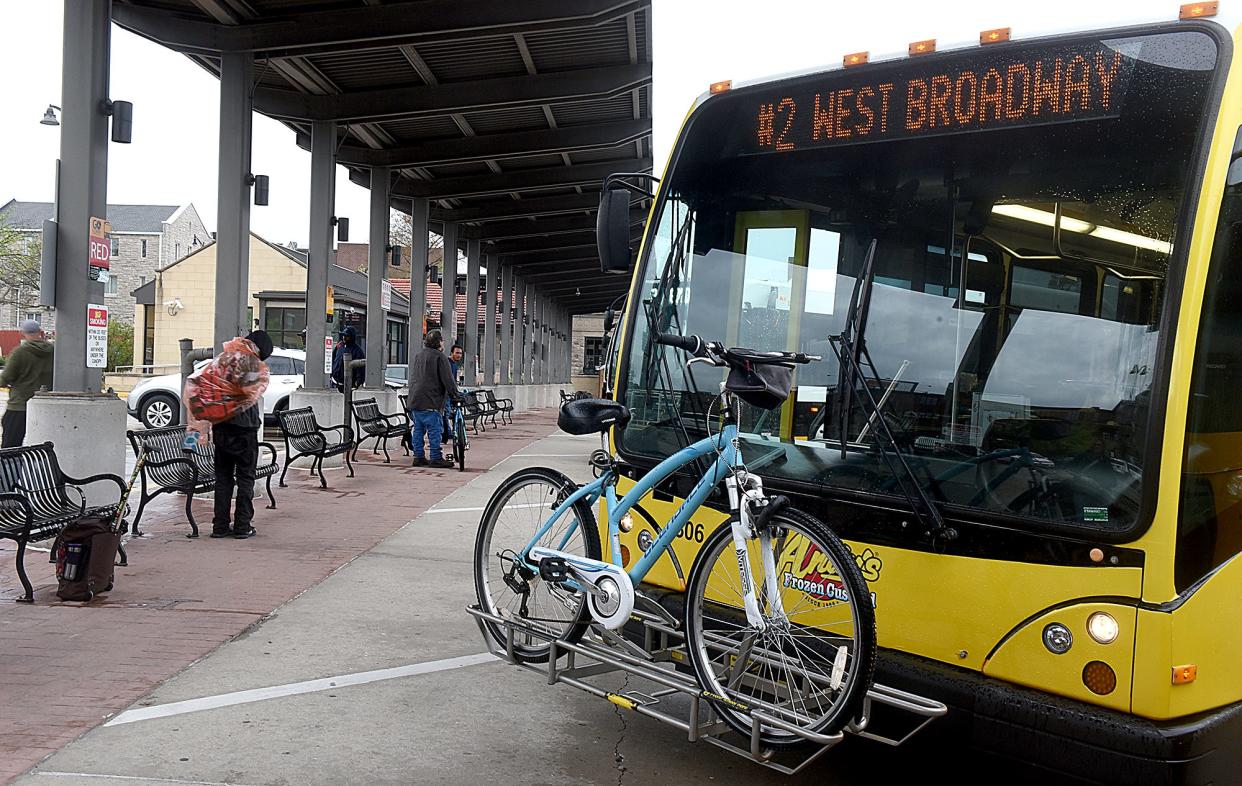Go COMO bus route combination seen as stop-gap until other solutions are developed

Go COMO, the city's bus transit system is at a precipice.
Burnout and low morale from 18 months of mandatory overtime, which mostly has affected 19 out of 25 bus operators, has led Go COMO to consider a route combination as a temporary measure as it seeks to other ways to boost employment.
Transit systems throughout the U.S. are feeling the crunch of fewer-than-usual drivers and Go COMO is no exception. Go COMO would need 45 full-time staff for the city's bus system to operate without the need for driver overtime, said Mike Sokoff, transit and parking manager. Overtime hours for Go COMO have been logged since at least 2014.
In 2018, the division had on average 36 full-time operators. It's now down by at least 10 in 2023.
As of Monday night, the city had 25 full-time fixed-route bus drivers. There are other leadership positions and paratransit positions that bring the daily complement to 36, but that still means significant overtime. There also are eight fixed-route bus drivers currently eligible to retire.
"We run very tight and it's a compliment to our staff on a daily basis that Go COMO has been able to do what we are doing," Sokoff said.
More: Same stops, longer rides: Go CoMo seeks to combine bus routes
Go COMO discussed the possibility of combing the city's red and green, gold and blue and black and orange routes, going from six to three, starting sometime in mid-February with the Columbia City Council on Monday.
This would mean 90-minute route times instead of 45 minutes and has the potential of reducing the number of overtime operators currently are required to claim. The main concern with the 90-minute ride time is for those who use the bus as a means to get to their job, especially if there is some morning when a bus is missed.
Ridership on fixed-route buses has increased to above pre-pandemic levels from 2019. Go COMO is supported by the Tiger Line agreement the city has with the University of Missouri and federal funds it receives from the Federal Transit Administration. Tiger Line and the fixed routes contribute to the total ridership numbers submitted to the FTA.
Factors that could have effects on the route combination plan are the results of a classification and compensation study currently underway by the city and a transit study expected to start in the spring. Initial data and reports on the class and comp study are expected by late February or early March, said Kathy Baker, human resources director.
Columbia Mayor Barbara Buffaloe does not want to see this temporary measure become a years-long solution, and so requested city staff provide a three-month report on the effectiveness of the route combination.
"This is a moment where you are proposing moving forward with this as a temporary stop-gap until we have other solutions in place," she said.
First Ward Council Member Pat Fowler also suggested that all council members take a journey, possibly on a Saturday when routes already are combined from the typical six into three, so as to chat with operators and users to get their feedback.
Sokoff made the announcement of the potential route update via Monday's council work session to provide enough time to inform users and the wider community, he said. He recognizes that this may lead to a drop in ridership, but "I have to make sure I have the drivers to make any sort of route system work," he said.
Efforts at recruitment are being made, Sokoff and Baker said.
"We are partnering with KOMU. They have a new — recruitology is the name of it. They are doing all of the common job boards. We also are getting into some transportation and logistics niche networks through this program," Baker said.
The city started working with that program on Jan. 1 and in the nine days since, there were 262 views and 26 clicks on the bus operator job posting.
"That doesn't necessarily result in people applying for the position, but it does show it is gaining some attention from job seekers," Baker said.
Sokoff noted internship and other community college education opportunities, but thought those may come at a later time. Buffaloe asked if they could be explored sooner, rather than later as a means of workforce development and looked at the possibility of applying American Rescue Plan Act funds to that solution.
Charles Dunlap covers local government, community stories and other general subjects for the Tribune. You can reach him at cdunlap@columbiatribune.com or @CD_CDT on Twitter. Subscribe to support vital local journalism.
This article originally appeared on Columbia Daily Tribune: Columbia bus system at near collapse due to lack of drivers

